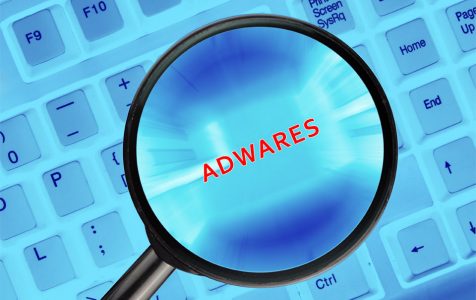Every day, the average user is at risk of getting a false alert or message warning him/her about a certain problem on his/her computer. These types of notifications often contain threats or are displayed as an error message whenever the user tries to carry out a particular task. Most of the alerts claim to have been sent by the support teams at various OS providers such as Microsoft or Apple. This is nothing but a scam. These OS providers barely send these messages, especially not directly over the internet.
When you get such a pop-up alert, avoid visiting these sites as there’s a likelihood that these messages are from cybercriminals. Visiting these sites exposes you to dangerous programs that could potentially damage your computer.
What is the “Windows Error Code: WIN.DLL01150”?
“Windows Error Code: WIN.DLL01150” is an adware that relies on social engineering techniques to trigger the display of misleading ads that trick people into clicking on them. The unwary users are lured to dubious websites.
Alternatively, the deceptive message could trick the users into thinking that their computers have crashed due to system issues and that they’re getting the alert from Microsoft. The user is then asked to call the scam tech support number that the scammers have provided. Hoping that calling will help find a solution to the fake alert, the victim has no option but to call the scammers. During the call, the victims unconsciously expose their information and end up installing malicious software.
Expert Tip: For smoother PC performance, consider using a PC optimization tool. It handles junk files, incorrect settings, and harmful apps. Make sure it's right for your system, and always check the EULA and Privacy Policy.
Special offer. About Outbyte, uninstall instructions, EULA, Privacy Policy.
Distribution
“Windows Error Code: WIN.DLL01150” is spread when internet users visit malicious sites by following deceptive links. The users don’t pay much attention to details, which leads to the installation of these shady apps.
To prevent the installation of such apps, always choose the “Advanced or Custom” installation option. This way, you can rest assured knowing that everything that gets installed is useful and secure.
Once your computer becomes infected, the “Windows Error Code: WIN.DLL01150” scam starts appearing on your screen, locking your web browser, and preventing you from accessing the content you wanted to. Falling for the scam can cost you money, loss of data, and credentials.
Triggering any task or engaging in any communication between you and the scammers can cause you to suffer huge losses of data. Another risk is that your credentials get revealed to the wrong people.
What Can You Do about the “Windows Error Code: WIN.DLL01150” Scam?
Are you tired of seeing “Windows Error Code: WIN.DLL01150” pop-up ads? Eliminating the adware requires that you use a robust anti-malware tool. This will not only remove the “Windows Error Code: WIN.DLL01150” scam but also all related threats and other intruders completely.
You need to ignore these out-of-nowhere messages and focus on the removal of the shady program. The sooner you remove the scam message, the sooner your device becomes useable again.
Due to the complexity of the scam removal procedure, the process requires some background in computer programs. If you cannot do it by yourself, it’s better if you consult a professional to do it for you.
Here are the steps for the manual removal of the “Windows Error Code: WIN.DLL01150” scam:
Removing “Windows Error Code: WIN.DLL01150” Scam from Windows
- Go to “Start.”
- Select “Control Panel.”
- Next, click on “Programs & Features.”
- If you’re using Windows XP, click on “Add/Remove Programs.“
- To access the programs on Windows 10/11/8, right-click in the lower-left corner of the screen.
- The “Quick Access Menu” shows up.
- Choose “Control Panel.”
- Select “Uninstall a Program.”
- Look for the scammy PUP and any other questionable program.
- Click on “OK” to save the changes.
How to Remove the “Windows Error Code: WIN.DLL01150” Scam from Your Web Browser
Keep in mind that the steps may vary slightly depending on the browser you’re using. Here are the generic steps to follow:
- To remove the add-ons, open the browser.
- Click on the menu icon at the upper right corner.
- Choose “Add-ons/Tools,” then go to “Extensions.”
- Select the scammy PUP and any unwanted plug-in.
- Click on “Remove.”
- To reset the browser to its default settings, go to the main menu once more.
- Choose “Troubleshoot Information” or “Manage Search Engines.”
- Next, select “Reset browser to default state.”
- Click “OK” to complete the removal.
Once you’ve completed all these steps, the “Windows Error Code: WIN.DLL01150” scam should be completely removed from your computer.
Repair
Once the malicious software gets installed into your computer, it can cause significant changes, such as deleting files or altering certain system settings. The damage may be fixed by repairing the corrupted files using PC optimization tools. Some of the recommended tools include Reimage, Malwarebytes, and Spyhunter 5.
Conclusion
The “Windows Error Code: WIN.DLL01150” scam is a malicious PUP that exposes the user to hacked or pirated pages and other forms of misleading content that triggers the display of annoying ads. To remove it completely, you need a trusted anti-malware tool to run a full system scan, followed by a few clicks that leave your system malware-free.
